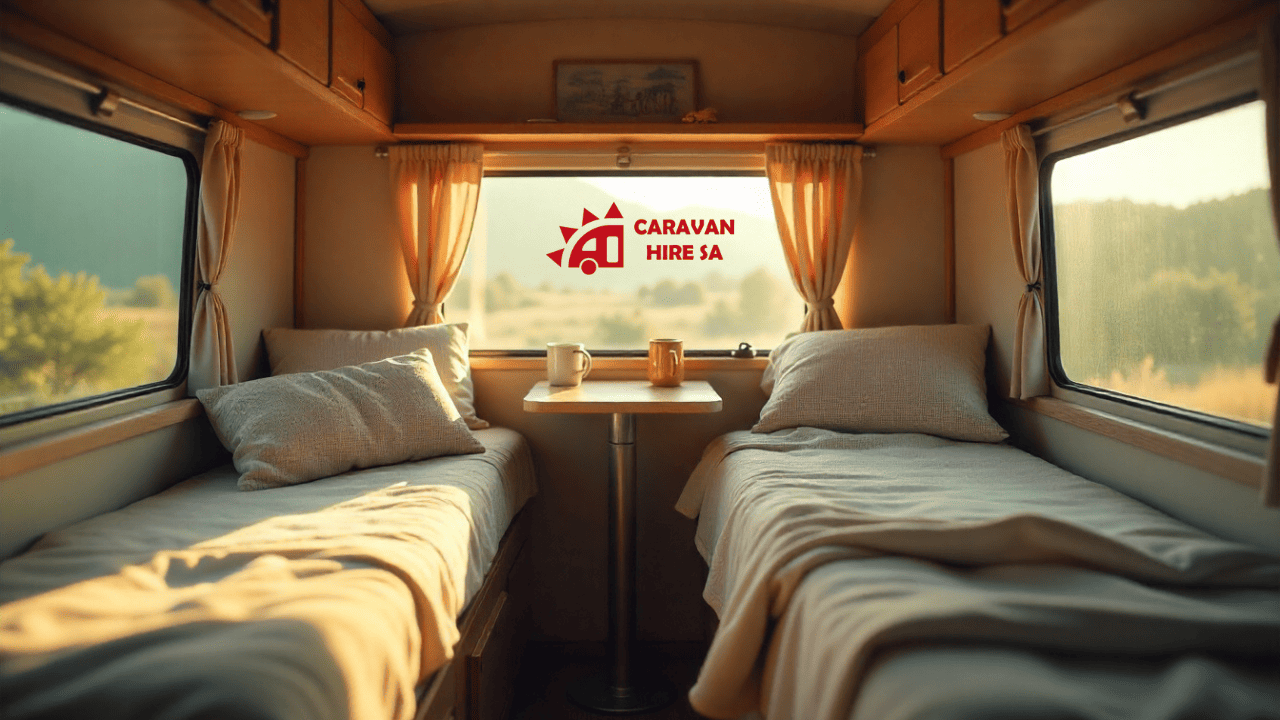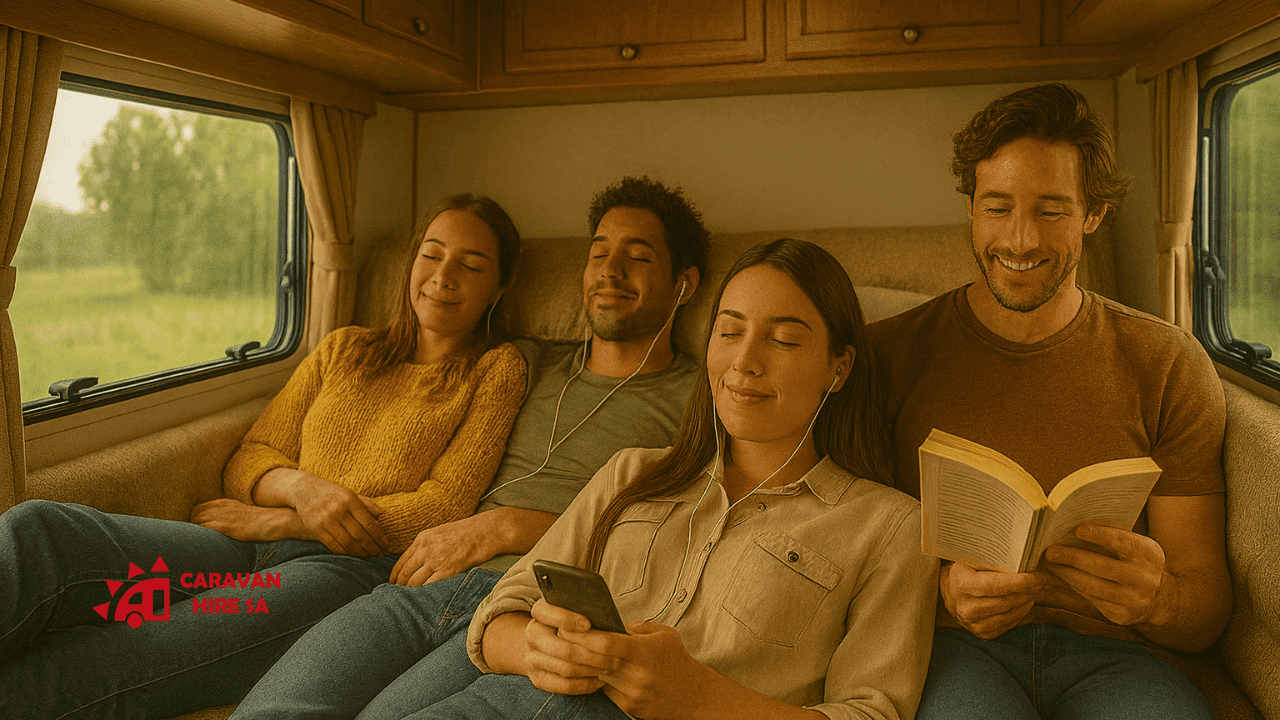Investing in a caravan house may upgrade your lifestyle. While it isn’t a perfect match for any taste, considering its space constraints and maintenance demands, it can drastically influence your pace of life, wellness, etc. Stay tuned to learn more about the advantages and disadvantages of long-term caravan housing in Australia.
Why More Australians Are Choosing to Live in Caravans
It may become a source of comfort and mobility for seasonal/remote workers, digital nomads, retirees, and other potential users. Living in a caravan Australia is appealing for several reasons:
- Less mental fatigue of living in overcrowded communities;
- Tax benefits;
- Rental opportunities;
- Domestic tourism without borders;
- Lifestyle freedom and flexibility;
- Retirement options;
- Sustainable living with a smaller ecological footprint.
Upfront Costs — Caravan vs Apartment

Narrow down your palette of options for caravan living Australia by defining what’s affordable and matches your needs — the size, quality, and amenities of the target vehicle matter. Real estate prices in Queensland, for example, may easily start at 350,000 AUD, while caravans for sale range from 40,000 AUD to 100,000 AUD. Besides, the latter rarely requires stamp duty.
Comparing with Mortgage or Rent
Monthly expenditures for caravan life are commonly from 500 AUD to 1,500, with costs for fuel included. In comparison, covering a mortgage will require regular payments for the deal’s interest, insurance, and taxes. Although depreciation is a major concern for caravan owners, long-term and personalised planning can help you minimise several risks and issues with ease.
Ongoing Living Costs and Maintenance
Living in a caravan full time Australia without preparations may require funds you can’t afford to spend. Estimating such expenses is key to a happy housing upgrade:
- Up to 1,200 AUD for satellite Internet connectivity and mobile data plans;
- Up to 1,000 AUD, on average, for caravan registration and regulatory compliance;
- Up to 2,500 AUD for insurance;
- Up to 6,000 AUD for fuel expenses and towing.
The cost of maintenance, repairs, utilities, and so on varies a lot — your interior improvements may require 500 AUD upfront or turn into a multi-thousand investment at the end.
Legality and Living Regulations
While the Australia caravan living trend is gaining momentum, it requires a well-thought-out approach to gain its benefits to the fullest extent possible. Here are some aspects to take into account before getting started:
- Duration limits, varying per council and state;
- Environmental restrictions for siting and moving caravans (e.g., coastal regions);
- Insuring and registering your new dwelling;
- Access to utilities;
- Safety standards and building codes;
- Council permits.
Rules by State (NSW, VIC, QLD)
Several rules, dictating the stationary caravan Australia life, are general state-wide guidelines. Many specific conditions and limits are set by local councils and vary by zoning, property size, connection to utilities, and whether the target vehicle is considered a “moveable dwelling” or a fixed structure.
| State | Key Rule | Time Limit & Condition |
| New South Wales (NSW) | You are permitted to use a caravan/mobile dwelling only if there is already a main approved dwelling on the land. | Short-term stays are allowed for up to sixty days per annum in some situations. |
| Victoria (VIC) | A permit is needed to live in a caravan or other movable dwelling on private land if staying more than thirty consecutive days (if not in a caravan park). | When living in a caravan park as your main residence, you become a “park resident” after sixty days or more. |
| Queensland (QLD) | Local laws allow a caravan/rec vehicle on a property for family or friends for up to six months in a twelve‑month period, in some council areas. | For tiny homes on wheels classified as caravans, they are not treated as permanent dwellings unless fixed to the land. |
Comfort and Quality of Life

Your caravan life is all about personalisation, from exterior and interior design elements to technical upgrades:
- Brake system conversions;
- Air conditioning;
- High-security locks;
- Diesel heaters and inverters;
- Battery and solar systems, etc.
With smart furniture solutions and privacy management tools, you can overcome the typical drawbacks of caravan housing — layout dividers, modular storage, inflatable sofas, folding chairs, and other ideas to make this space truly cosy.
This lifestyle isn’t just about your freedom of relocation in Australia (with closer attention to local laws and regulations, of course):
- Getting closer to nature;
- Creating a community of like-minded individuals, fostering friendly caravan stations;
- Slower pace of life;
- Quieter environments for improved wellness, sleep quality, and more.
Common Downsides People Often Forget
Buying a caravan for permanent living may seem like a dream coming true, especially when it comes hand in hand with the ability to travel anywhere and anytime, at your earliest convenience. Yet, checking the big picture behind this lifestyle change is worth it:
- Hidden running costs — allocate enough funds for campsite, fuel, and other kinds of fees.
- Digital isolation — remote work and communication may be negatively affected by weak Internet and mobile coverage in rural areas in Australia.
- Legal restrictions — without council approvals, this living format is heavily restricted, with no more than twenty-eight days annually for a caravan on private property in Western Australia.
- Weather dependency — you should always factor in ever-changing weather conditions when preparing your safe travel plans, with self-sufficient maintenance skills, wear and tear on vehicles, and other considerations included.
Don’t overlook all the dilemmas associated with caravan housing. This way, you won’t end up regretting your investment one day.
Long-Term Value and Return on Investment
Is buying a caravan a good investment Australia? A lot depends on your strategy — consider the correlation between its financial and lifestyle ROI first. While long-term caravan housing allows for travel flexibility, its value may be lacking in comparison with traditional real estate in the country. On the other hand, you can rent your caravan and turn it into a passive source of income.
With high-quality modifications, such as solar panels, you can elevate potential resale benefits. Unless well-maintained, the depreciation percentage of your caravan may be up to 60% in ten years.
Who Benefits Most from Buying a Caravan to Live In
Saying “yes” to full time caravan living is typically advantageous for such categories of end users in Australia:
- Investors in shared assets — some buyers purchase caravans for dual use — personal living and periodic rental — to maximise long-term return on investment.
- Property transitions — for a certain period, it may be a great option for those who want to save enough funds before upgrading their living conditions.
- Travelling- and adventure-oriented families — the mobility and freedom of this form of housing is second to none.
- Cost-efficient housing — this financial reset can come in handy for young couples and other users interested in omitting high rent costs. In Queensland, for instance, a typical minimal upfront investment for a month of rent will be around 900 AUD.
Who Caravan Living Is (and Isn’t) Right For

Caravan living in Australia appeals to different groups for different reasons — from retirees seeking flexibility to remote workers reducing rent pressure. Still, it’s not a one-size-fits-all option. Don’t overlook the potential disadvantages of living in a caravan:
- Limited space;
- Higher security risks of damage or theft;
- Restricted facilities;
- The lack of privacy;
- Demanding maintenance to minimise depreciation;
- Parking issues;
- Insurance and servicing costs that may add up from year to year.
If you are ready for frequent relocation stress and limited privacy, this housing option can provide you with a pretty affordable entry to independence.
Can you live in a caravan? Absolutely! However, you should thoroughly evaluate all the ups and downs of this decision and define how fitting it will be for your lifestyle and overall preference. Embrace this alternative to high rent in Australia, experiencing the peculiarities of an outdoor lifestyle on your own.

